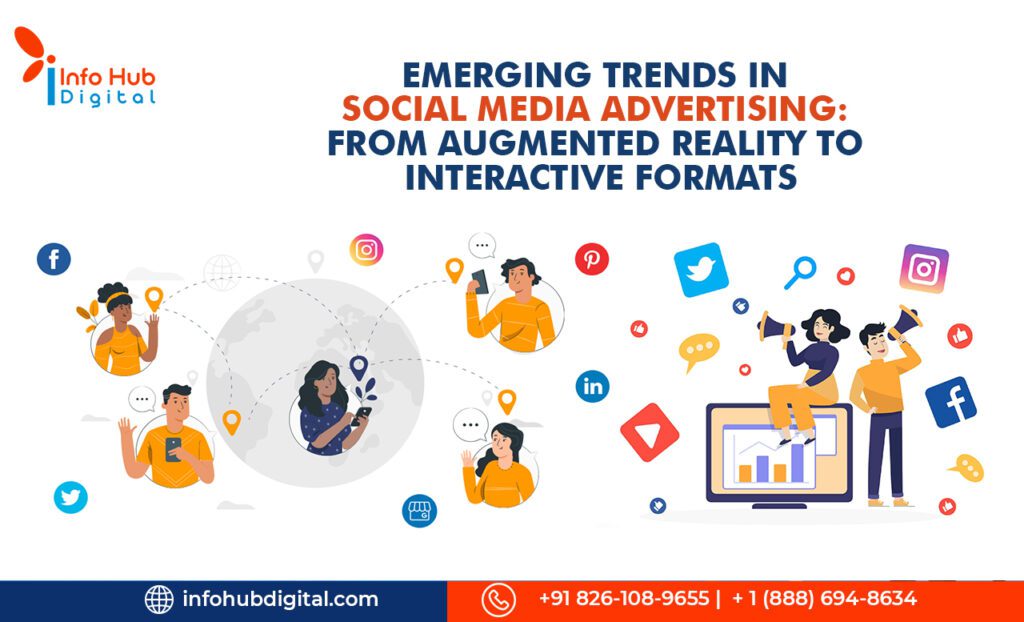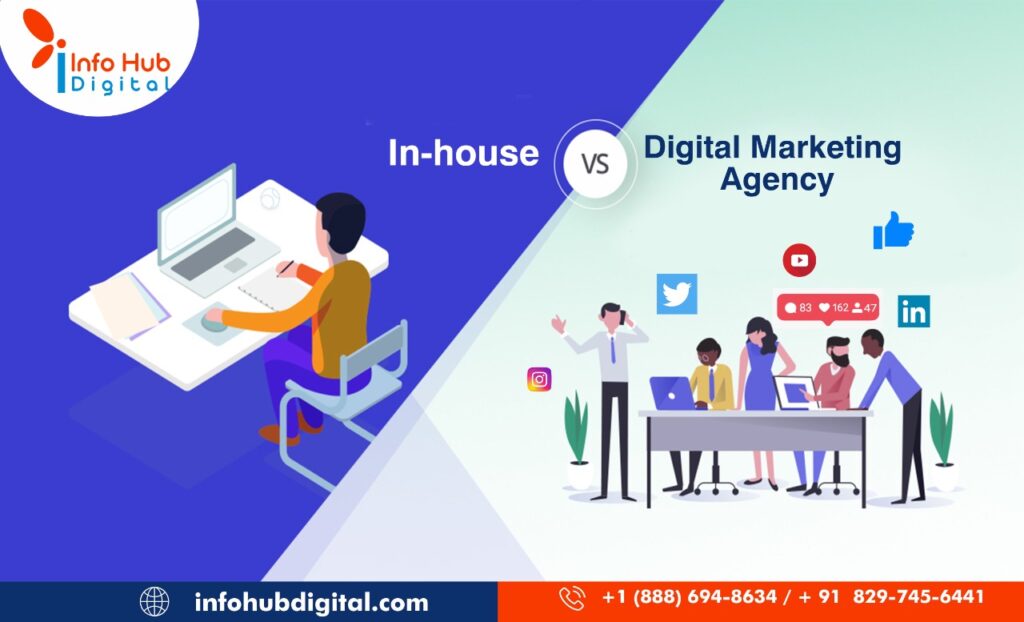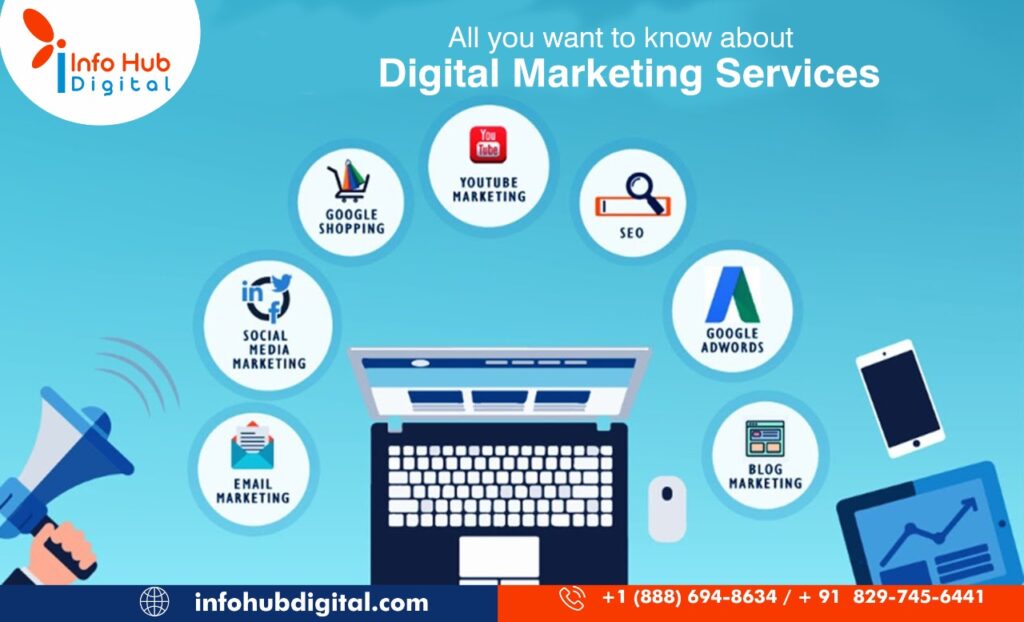Table of Contents
Introduction:
Social media advertising has evolved significantly over the years, becoming a pivotal tool for businesses to connect with their target audience on a global scale. The fast-paced nature of the digital landscape demands a keen eye on emerging trends that can drive engagement, boost conversions, and foster brand loyalty. In this article, we explore some of the most influential trends shaping the future of social media advertising and how marketers can leverage them to stay ahead in the game.
Augmented Reality in Social Media Advertising:
Augmented Reality (AR) has emerged as a game-changer in the realm of social media advertising, blurring the lines between the physical and digital worlds. By overlaying virtual elements onto the real environment, AR creates captivating and immersive experiences for users. Integrating AR features into social media platforms has become increasingly accessible, with major players offering AR filters and effects for advertisers.
The Benefits of AR in Advertising Campaigns:
AR’s impact on advertising is two-fold. Firstly, it enhances user engagement by providing interactive and entertaining experiences that resonate with audiences. When users actively participate with AR content, it creates a deeper connection with the brand, fostering a memorable encounter that can be shared with others. Secondly, AR allows advertisers to tailor experiences based on user preferences, driving personalization to new heights.
Successful Case Studies of AR in Social Media Advertising:
Various brands have harnessed the power of AR to create innovative and memorable advertising campaigns. For instance, a popular cosmetics company launched an AR-powered “try-on” feature that allowed users to virtually apply makeup products. The interactive campaign garnered significant user engagement and boosted product sales. Similarly, a well-known furniture retailer introduced AR functionality to its app, enabling users to visualize furniture pieces in their homes before making a purchase decision, resulting in a substantial decrease in returns and increased customer satisfaction.
Interactive Formats in Social Media Advertising:
Interactive advertising is another trend that has caught the attention of marketers seeking to captivate and involve their target audience actively. Unlike traditional static ads, interactive formats encourage users to participate and engage with the content, thereby influencing the advertising experience.
Types of Interactive Formats:
Several interactive formats have gained popularity among brands looking to enhance user involvement. Polls and quizzes allow users to express their opinions, contributing to valuable data collection while also providing an entertaining experience. Gamification, on the other hand, turns marketing efforts into games, rewarding users with incentives for completing challenges. Lastly, interactive videos enable users to make choices within the video, shaping the narrative based on their decisions, resulting in a highly engaging and personalized experience.
Advantages of Interactive Formats:
The adoption of interactive formats offers a range of benefits for both brands and consumers. Firstly, these formats boost user participation, as individuals are more likely to interact with content that appeals to their curiosity and interests. This increased engagement ultimately translates into better brand recall and a higher likelihood of conversions. Secondly, interactive formats provide a treasure trove of data, allowing advertisers to glean insights into user preferences and behavior, which can be leveraged for more targeted and effective marketing strategies.
Brands Excelling with Interactive Advertising:
Major brands have successfully utilized interactive formats to create memorable advertising campaigns. A prominent sportswear company introduced an interactive quiz on their social media page, where users could discover their ideal workout style based on their responses. This not only led to a surge in engagement but also allowed the brand to understand their audience’s fitness preferences better. Additionally, a popular food delivery app introduced a gamified campaign that rewarded users with discounts for completing food-related challenges. The interactive nature of the campaign resulted in heightened user satisfaction and an increase in app downloads.
Influencer Marketing with a Twist:
Influencer marketing has been a stalwart in the social media advertising arena, but the landscape is evolving with the rise of virtual influencers and AI-driven personalities. Virtual influencers are computer-generated characters that have a substantial following and can be programmed to embody specific brand messages and values.
Leveraging Virtual Influencers for Impactful Campaigns:
Brands are turning to virtual influencers as they offer a unique and controlled persona, which aligns seamlessly with the brand image. These digital influencers can be scripted to deliver brand messages consistently, avoiding potential controversies that human influencers might encounter. By collaborating with virtual influencers, businesses can tap into new audiences, especially younger demographics that are drawn to the novelty and creativity associated with these characters.
Authenticity Concerns and Mitigation Strategies:
Despite the advantages of virtual influencers, there are authenticity concerns. Consumers may question the genuineness of these computer-generated personalities and their ability to genuinely connect with audiences. To address these concerns, it is crucial for brands to strike a balance between virtual and real-world content. Showcasing the behind-the-scenes creation of the virtual influencer’s character and involving them in charitable initiatives can build credibility and humanize the digital persona.
Social Commerce and Shoppable Posts:
Social media platforms have seamlessly integrated with e-commerce, giving rise to the concept of social commerce. Shoppable posts allow businesses to directly sell products within social media apps, streamlining the customer journey from discovery to purchase.
The Convergence of Social Media and E-Commerce:
Social commerce merges the social media browsing experience with the convenience of shopping, creating a seamless and intuitive buying process. With a growing number of users turning to social media for product inspiration and recommendations, the integration of shopping features within the platform is a natural progression.
Shoppable Posts and In-App Purchases:
Shoppable posts enable businesses to tag products in their social media posts, allowing users to click through and make purchases without leaving the app. This frictionless shopping experience reduces the chances of drop-offs during the purchase process, increasing conversion rates significantly.
Fostering a Seamless Shopping Experience:
To optimize social commerce efforts, brands need to invest in tools and features that foster a seamless shopping experience. Integrating product tags strategically and providing a secure and user-friendly social checkout process are essential elements of success.
Success Stories of Social Commerce Implementation:
Several brands have embraced social commerce successfully. An up-and-coming fashion brand utilized shoppable posts on their Instagram page, resulting in a surge of direct sales from their social media audience. Similarly, a beauty retailer leveraged social commerce to introduce a limited-edition product exclusively through their social media platforms, leading to increased brand loyalty and social media engagement.
User-Generated Content (UGC) as a Key Strategy:
User-Generated Content (UGC) has become a powerful strategy for brands looking to foster authenticity, build trust, and engage their audience.
Harnessing the Power of User-Generated Content:
UGC refers to content created and shared by users that features a brand’s products or services. This type of content is authentic and relatable, making it highly influential in shaping consumer perceptions.
Encouraging User Participation and Content Creation:
Brands can encourage UGC by organizing contests, challenges, or encouraging customers to share their experiences with the products. This approach not only generates a steady stream of content but also fosters a sense of community around the brand.
UGC in Building Trust and Credibility:
UGC serves as a testament to a brand’s quality and reliability. When potential customers see real people endorsing and enjoying the products, it instills confidence in their purchasing decisions.
Legal and Ethical Considerations with UGC:
Brands must navigate legal and ethical considerations when using UGC in their advertising. This involves obtaining proper permissions from users before featuring their content, giving credit to content creators, and ensuring that the content aligns with the brand’s values and guidelines.
The Role of Artificial Intelligence (AI) in Social Media Advertising:
AI has revolutionized social media advertising, empowering marketers with advanced tools for targeting, content creation, and customer engagement.
AI-Driven Ad Targeting and Personalization:
AI algorithms analyze vast amounts of data to identify user preferences, behaviors, and interests. This data-driven approach allows advertisers to deliver personalized and relevant ads to their target audience, improving ad performance and user experience.
Automated Content Creation and Optimization:
AI-powered tools can generate and optimize ad content, saving time and effort for marketers. From generating ad copy to designing creatives, AI streamlines the content creation process for maximum impact.
AI-Powered Chatbots for Customer Engagement:
AI-driven chatbots are transforming customer service in social media advertising. These intelligent bots can handle customer inquiries, provide personalized recommendations, and facilitate seamless interactions, enhancing overall customer satisfaction.
Balancing Human Touch with AI Efficiency:
While AI offers immense benefits, brands must strike a balance between automated processes and human touch. Maintaining genuine and empathetic human interactions is crucial to building lasting relationships with customers.
Conclusion:
At Info Hub Digital, we take pride in being a leading digital marketing services provider in India and the USA. Our commitment to staying updated with emerging trends in social media advertising sets us apart as the best social media advertising services provider agency in India. With a focus on harnessing the power of augmented reality, interactive formats, and user-generated content, we deliver captivating and personalized experiences to our clients’ target audience. Our team of experts leverages cutting-edge AI tools to optimize ad targeting and content creation, ensuring maximum engagement and conversions. Partner with us at Info Hub Digital to elevate your brand’s presence and drive exceptional results in the dynamic world of social media advertising.







